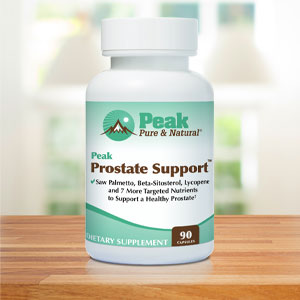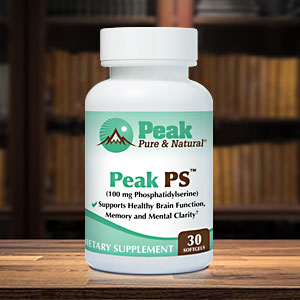Get Easy Health Digest™ in your inbox and don’t miss a thing when you subscribe today. Plus, get the free bonus report, Mother Nature’s Tips, Tricks and Remedies for Cholesterol, Blood Pressure & Blood Sugar as my way of saying welcome to the community!
The leading cause of death from fatty liver isn’t what you’d think

An estimated 1 in 4 adults worldwide suffers from non-alcoholic fatty liver disease (NAFLD), a condition resulting from an abnormal buildup of fat in the liver that’s not caused by alcohol consumption.
Without treatment, NAFLD can lead to inflammation, cirrhosis and liver failure. But that’s not all…
Heart disease is the leading cause of death in people with NAFLD. It’s also a risk factor for coronary artery disease.
Considering that NAFLD is reversible, an early and accurate diagnosis would obviously save lives.
That’s why the American Heart Association recently issued a scientific statement designed to not only raise awareness and understanding about NAFLD, a condition that often flies under the radar, but also to raise a red flag about its significant connection to heart disease…
NAFLD and heart disease
Statements on NAFLD published by professional organizations specializing in gastroenterology have focused on liver toxicity rather than heart disease risk.
The scientific statement issued by the AHA is both the first issued by the organization on NAFLD — and the first to bring attention to the hidden heart health danger associated with NAFLD.
Two types of NAFLD exist. The type where only fat is present in the liver is called non-alcoholic fatty liver. When inflammation and scarring are also present, the condition is known as non-alcoholic steatohepatitis or NASH.
Heart disease and NAFLD have many of the same risk factors, including metabolic syndrome, a condition characterized by elevated blood sugar and blood triglycerides, increased abdominal fat and high blood pressure. Other risk markers include type 2 diabetes, obesity, prediabetes or impaired glucose tolerance.
However, having NAFLD puts you at higher risk of heart disease than those without the condition. That’s a big problem because, as the statement from the AHA notes, it’s difficult to properly diagnose NAFLD…
“Nonalcoholic fatty liver disease (NAFLD) is a common condition that is often hidden or missed in routine medical care. It is important to know about the condition and treat it early because it is a risk factor for chronic liver damage and cardiovascular disease,” said P. Barton Duell, M.D., FAHA, chair of the statement writing committee and professor of medicine in the Knight Cardiovascular Institute and Division of Endocrinology, Diabetes and Clinical Nutrition at Oregon Health & Science University in Portland, Oregon.
Most people with NAFLD don’t have symptoms and routine blood tests may not show liver abnormalities despite the presence of NAFLD or NASH. On top of that, Diagnostic tools seem to be lacking as well…
There is a specialized ultrasound that specifically measures liver elasticity, fat and stiffness resulting from scarring, all of which can be used to detect NAFLD. But the noninvasive scan is not used enough to help diagnose and monitor treatment in NAFLD and NASH.
Instead, medical professionals rely on liver biopsy to diagnose more advanced stages of NAFLD — a procedure that’s invasive and expensive.
The bottom line: “Individuals with risk factors for NAFLD warrant more careful screening.”
Damage is reversible if NAFLD diagnosed in time
Some genetic factors can impact NAFLD risk so it could be useful to know whether you have a family history of any liver condition.
But right now, lifestyle changes are the foundation of early NAFLD treatment and prevention efforts. Overall, people who have NAFLD or are at risk of the disorder should:
- Reduce their fat intake
- Limit sugar consumption
- Choose more fiber-rich vegetables and whole grains.
- Avoid alcohol consumption
If you’re looking for a particular eating plan, a Mediterranean-style diet is the only one specifically recommended to treat NAFLD and NASH. You can also consult with a dietician to plan a healthy diet and lose weight if necessary.
The AHA statement cites research showing that losing 10 percent of body weight dramatically reduced liver fat and improved fibrosis. Even losing at least 5 percent of body weight resulted in some improvement, although not as dramatic.
As far as exercise goes, the statement encourages 20 to 30 minutes of daily physical activity to decrease liver fat and improve insulin sensitivity. Researchers at the University of Tsukuba have discovered when it comes to NAFLD, an exercise regimen has benefits to the liver unrelated to weight loss.
The good thing about these healthy lifestyle habits to reduce NAFLD risk is that these steps also reduce the risk of developing cardiovascular disease, type 2 diabetes and other chronic health issues that can put additional strain on your heart and liver.
If you have NAFLD or suspect it, talk to a healthcare provider.
Editor’s note: There are perfectly safe and natural ways to decrease your risk of blood clots including the 25-cent vitamin, the nutrient that acts as a natural blood thinner and the powerful herb that helps clear plaque. To discover these and other secrets of long-lived hearts, click here for Hushed Up Natural Heart Cures and Common Misconceptions of Popular Heart Treatments!
Sources:
About 1 in 4 adults has an often-missed liver disorder linked to higher heart disease risk — American Heart Association
Testing for Nonalcoholic Fatty Liver Disease — JAMA Patient Page














